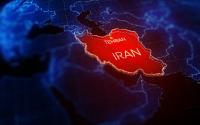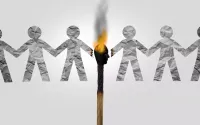28 March 2005Jeremy Scahill
Giuliana Sgrena would probably be the first to say that to focus on her case would be to miss the point on the extent of the daily, horrific violence Iraqis face at the hands of US soldiers. Sgrena is the Italian war correspondent that was shot by US forces as she was en route to the Baghdad airport after being freed from a month of being held hostage by an Iraqi resistance group. She knows better than most that if she and the senior Italian intelligence official killed by US troops as he tried to save her were merely Iraqi civilians, this would be even more of a non-story than it already is in the US press.
With Terri Schiavo and Michael Jackson to cover, it is pretty difficult for most media outlets to find the time to report on any of the more than 100,000 Iraqi civilians killed since the beginning of the invasion 2 years ago. That¹s why cases like Sgrena¹s become so important‹because they represent a chance to show the world that part of the reality Iraqis face every day of their lives: They are kidnapped in alarming numbers; they are shot by trigger-happy US soldiers; their deaths are justified--if they are even acknowledged--by US officials floating flimsy cover stories that would never stand up in any US court (except perhaps a military court).
New details are emerging about Sgrena's shooting and the death of the Italian official, Nicola Calipari, that bear reporting in English (this, of course, remains a significant story in Italy). Independent journalist Naomi Klein recently met with Sgrena in the Rome military hospital where she has been since returning to Italy on March 5.
'Giuliana is quite a bit sicker than we have been led to believe,' says Klein. 'She was fired on by a gun at the top of a tank, which means that the artillery was very, very large. It was a four-inch bullet that entered her body and broke apart. And it didn't just injure her shoulder, it punctured her lung. Her lung continues to fill with fluid and there continues to be complications stemming from that fairly serious injury.'
This case has been written off by US officials as a 'horrific accident' that occurred on what we are told is 'the most dangerous road in Iraq,' where insurgents are constantly waiting in the bushes to attack. The Pentagon further contends that the Italians failed to slow down at a checkpoint and only after repeated attempts to stop the car did soldiers fire on the Italians. The problem is, according to Sgrena, this shooting didn¹t happen on that road. What¹s more, Sgrena says that there was no US checkpoint for which to slow down.
'This is treated as a fairly common and understandable incident that there would be a shooting like this on that road,' Klein says. 'I was on that road myself, and it is a really treacherous place with explosions going off all the time and a lot of checkpoints. What Giuliana told me that I had not realized before is that she wasn't on that road at all.'
According to Klein, when Calipari was killed and Sgrena wounded, they were on a secured road that can only be accessed through the heavily-fortified Green Zone and is reserved exclusively for top foreign embassy and US officials. 'It's a completely separate road, actually a Saddam-era road, it would seem, that allowed his vehicles to pass directly from the airport to his palace,' says Klein. 'And now that is the secured route between the U.S. military base at the airport and the U.S. controlled Green Zone and the U.S. embassy.'
'It was a VIP road, for embassy people, not for normal people,' Sgrena told Klein. 'I was only able to be on that road because I was with people from the Italian embassy.'
So when Calipari, the Italian security intelligence officer, picked up Sgrena from the abandoned vehicle where her captors left her, they drove directly to that road via Green Zone.
That explains why Sgrena said that when they drove to the airport she ³thought we were finally safe, because the area where we were was under the control of the United States.²
Klein says that Sgrena is very frustrated by the US government¹s claim, repeated consistently by the media, that the Italians were fired at from a checkpoint. ³She says it wasn't a checkpoint at all,² Klein says. ³It was simply a tank parked on the side of the road that opened fire on them. There was no process of trying to stop the car, she said, or any signals. From her perspective, it was just opening fire by a tank.²
"It was not a checkpoint. Nobody asked us to stop," Sgrena told Klein "All the streets we were on were USA controlled so we thought they knew we were going through. They didn't try to stop us, they just shot us. They have a way to signal us to stop but they didn¹t give us any signals to stop and they were at least 10 meters off the street to the side."
Sgrena also says that the US soldiers fired at them from behind, which of course contradicts the claim that the soldiers fired in self-defense. 'Part of what we're hearing is that the U.S. soldiers opened fire on their car, because they didn't know who they were, and they were afraid,' says Klein. 'The fear, of course, is that their car could have blown up or that the soldiers might come under attack themselves. And what Giuliana Sgrena really stressed with me was that the bullet that injured her so badly came from behind, entered through the back of the car. And the only person who was not severely injured in the car was the driver, and she said that this is because the shots weren't coming from the front.'
'They were coming from the right and behind, i.e. they were driving away. So, the idea that this was an act of self-defense, I think becomes much more questionable,' says Klein. 'Because if indeed the majority of the gunfire is coming from behind, then clearly, the soldiers were firing at a car that was driving away from them.'
That could explain why the US military in Iraq has blocked the Italian government from inspecting the Italians' vehicle, even though the car is the property of the Italian government which bought it from the rental agency after this incident. 'I think they have something to hide if they won't give the car over for inspection,' Sgrena told Klein. 'It's very strange. If there is nothing to hide, why not let Italian justice officials see the car?'
'It was not self-defense,' Sgrena said. 'The soldiers were to the right of us on the side of the road, they started to shoot from the right and kept shooting from behind but most of the shots came from behind, Calipari was shot from the right and I was shot in the shoulder from behind. When we stopped, they were behind us. We could see that all the back windows of the car were broken from behind. If they are afraid, they can stop the car, they can ask it to stop, then you can shoot at the wheels but they didn't do that. They didn't try to stop the car and they shot at least ten bullets at the level of people sitting inside the car. If Calipari had not pushed me down they could have killed me.'
This case sheds important light on the culture of impunity surrounding the US occupation of Iraq. If this is how Washington treats Italy, one of its closest allies in the so-called war on terror, when US soldiers kill the country¹s second-highest ranking intelligence official, imagine the struggle Iraqis face as they die in the tens of thousands. They don¹t have a powerful figure like Sylvio Berlusconi to advocate for them. Instead, they have unembedded reporters like Giuliana Sgrena who risk their lives to tell these stories.
'You have to protect the life of journalists who are going and speaking to the people,' says Luciana Castellina, one of the founders of Sgrena's newspaper Il Manifesto. 'Otherwise, the result would be that we wouldn't have any journalists anymore or only the embedded journalists.'
Jeremy Scahill is a journalist with the radio/TV program Democracy Now! He can be reached at [email protected].






